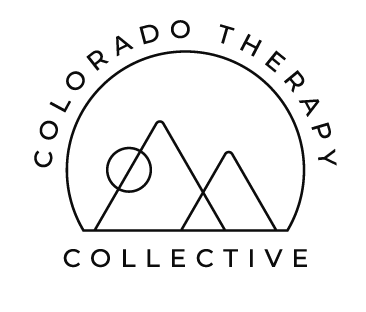Part 1: Attachment Styles in Non-monogamous Relationships: Navigating Intimacy Through the Lens of Security
In the realm of relationships, one size certainly does not fit all. Although we live in a mononormative society, for many individuals, the traditional model of monogamy may not align with their values, desires, or needs. Enter non-monogamy, an umbrella term that encompasses various relationship structures, including open relationships, polyamory, and other forms of consensual non-monogamous (CNM) arrangements, sometimes also referred to as ethical non-monogamy (ENM).
As a therapist specializing in attachment-based approaches, I’ve seen how navigating non-monogamous relationships can be both exciting and challenging. Among the various factors that can contribute to creating and maintaining healthy relationships, understanding attachment styles provides deeper insight into how we experience the complexities of intimate relationships.
In this 4-part series, I'll also review the intricacies of communicating expectations, negotiating boundaries, and preventing attachment injuries within non-monogamous relationships through an attachment-based lens. Let’s begin this first installment by diving into the foundational aspects of attachment styles within the realm of non-monogamous relationships.
Understanding Attachment Styles
Attachment theory, a concept pioneered by psychologists John Bowlby and Mary Ainsworth, suggests that the way we bond with primary caregivers in our early years shapes our attachment styles. These styles, such as secure, anxious, avoidant, and fearful-avoidant, play a crucial role in how we form and maintain relationships throughout our lives. In non-monogamous relationships, understanding these attachment styles becomes particularly important as they can significantly impact how individuals navigate intimacy and connection in multiple relationships. Throughout years of research and as noted by Jessica Fern in her book, “Polysecure”, it’s been determined that attachment styles aren't fixed and can actually vary within different relationships. You might exhibit one attachment style with one partner and a different one with another, indicating areas of distress and security within those relationships.
Secure Strategies of Relating
Consider someone with a secure attachment style. They tend to feel at ease with intimacy, trust more readily, and communicate openly in their relationships. While they may still experience moments of anxiety or jealousy, these feelings typically don't threaten the bond they share with their partners. Unlike individuals with other attachment styles, who may have more extreme reactions to closeness and distance, securely attached individuals can manage emotional discomfort and vulnerability with greater flexibility.
Insecure Attachment Styles
On the flip side, individuals with anxious or avoidant attachment styles often struggle with intensified emotions like jealousy and shame, heightened insecurities, and fear of abandonment. These attachment styles tend to exhibit more rigid and reactive responses to actual or perceived threats to intimacy and the possibility of rejection by a partner.
For instance, someone with a fearful-avoidant attachment style, which combines anxious and avoidant traits, might interpret their partner's unresponsiveness as a personal rejection. In response, they may lash out with yelling and criticism, hoping to reestablish closeness. However, paradoxically, they may then reject their partner's attempts to reconnect due to a lack of trust and a deep-seated fear of experiencing emotional pain triggered by their partner's actions. This internal conflict underscores the complexities inherent in fearful-avoidant attachment, where the individual oscillates between craving intimacy and pushing it away out of self-preservation. Similarly polarized, individuals with an anxious attachment style might resort to persistent pursuits to seek closeness and reassurance from their partner. However, these efforts may not effectively convey their need for closeness and reassurance. Whereas, partners with an avoidant attachment style may perceive the aforementioned behaviors as suffocating or controlling, prompting them to withdraw as a means of coping with attachment distress often to meet their own attachment needs for agency and independence.
Attachment Strategies are not Fixed
While striving for a secure attachment is commonly seen as the ultimate objective, it's crucial not to label other attachment styles as inherently flawed when compared to secure attachment. From the standpoint of attachment theory, all human behavior is viewed as serving a function, primarily aimed at meeting our needs in the most adaptive manner available to us. Each attachment style, whether secure, anxious, avoidant, or fearful-avoidant, represents a unique adaptation to early relational experiences and serves as a strategy for coping with intimacy, connection, and distance. Therefore, instead of viewing non-secure attachment styles as deficiencies, it's more constructive to understand them as adaptive responses to past experiences, which can be worked through and transformed with awareness and effort. Understanding these dynamics can empower individuals in non-monogamous relationships to navigate challenges and foster healthier connections with their partners.
Approaching non-monogamous relationships from an attachment perspective can help foster security, trust, and intimacy among partners. Be sure to pay attention to how your attachment styles influence your thoughts, feelings, and behaviors within the relationship dynamics. Practice emotional attunement by tuning into your partners' needs and emotions with empathy and understanding. Offer reassurance and support when your partners are experiencing distress or insecurity, and encourage them to do the same for you. In the second part of this 4-part series on navigating CNM, we'll talk about crucial aspects of transparency and communicating expectations





